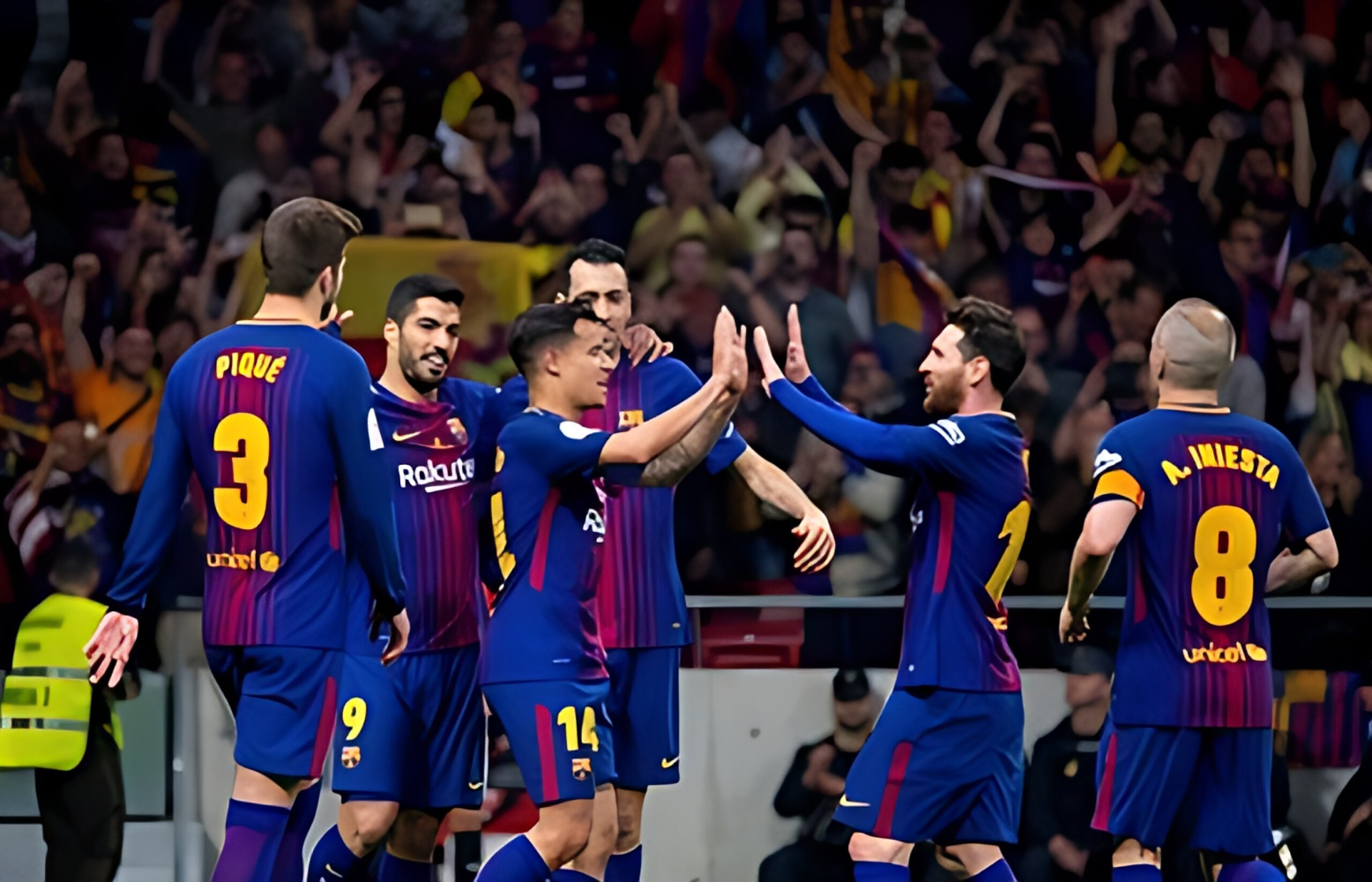Xavi is arguably one of the best midfielders of all time in the word if not just for FC Barcelona. He has grown up the youth ranks of the famous Barca Academy, La Masia and has been under the influence of having the ball at the feet and thinking about the next move in the mind. He returned to Camp Nou as the manager under many chaos on and off the field. After more than an year in charge, he has seen enough ups and downs as any Barca manager.
Let’s visit and analyze Xavi’s new formation which he started out recently at Barca, but has been working on since his first job as a manager at Al Sadd in Qatar. Xavi has had a plethora of managers who tried different tactics, but everyone had a similar notion of having the ball and dominating the opposition by taking the game to them. He has learnt Cruyff’s methods from childhood and the use of space and time in possession of the ball and developed under the philosophy of Pep Guardiola.
Initial Steps as a Manager:
Xavi has started out in the traditional 4-3-3, but moved to 3-4-3 and 4-2-3-1, with possession heavy idea and with a star studded team in Qatar, but had a rocky start, he couldn’t solidify the defence and was often leaking goals.
One of the main things is that Xavi tried to bring his philosophy on to the players who have little ability and idea on his way of football. Xavi with his traditional approach of playing from the back, one touch passing, aggressive pressing and wingers/wingbacks trying to stretch the opposition has started seeing some success, his team often maintained possession while playing short passes and the players being ready to receive the ball and move into different positions in order to always find a free man to pass. When in 3-4-3, the wingers played in inverted positions to drop deep and open up space allowing the wingbacks to move forward, and some times the striker dropped to a false nine position, allowing the wingers to stay put.
The players always stayed close to each other to give an option of a pass. This allowed in unlocking the opposition defences and also their decisive nature in the final third helped them in making the audience excited to see them play. They also often created overloads on the flanks with wingers and wingbacks almost occupying similar positions on the field during attack.
The New Idea:
As the days passed, Xavi opened up a new system of 3-4-3, with the 4 men in midfield almost positioning themselves in a box like shape. With 3 central defenders and a 4 men midfield in 2 levels, operating between the opposition attack and midfield, and midfield and defence, often allowed having some space in front of them. The striker playing with his back towards the goal and wingers providing width left some open spaces for the attacking midfielders. The 2 players at the base of midfield orchestrated almost everything, the tempo, switching the flank when required and the pressing.
This had a balance of 5 players in attack and 5 in defence, and did wonders in dismantling the opposition in Domestic competitions, but when faced against better defences in Asian Champions league, they couldn’t replicate the same success. This was also a result of not having abled players all across the field in Qatar.
The Current Version:
At Barca, Xavi didn’t have an easy start, with many off field financial issues and injuries on the field often created a liability in the sqaud, but he still had La Masia and young core in the first team to resort to. The likes of Pedri, Gavi, Frenkie, Araujo and Balde provided him with the profiles to play with
In the new season of 2023/24, Xavi got exciting players in Joao Felix, Joao Cancelo courtesy of year-long loans and Gundogan on a free transfer. These arrivals gave Xavi a little more freedom and the correct profiles to further develop his idea. Felix who has a terrific eye for goal with his immense potential to operate in areas with little space has owned the false winger position on the inside left allowing Gavi to shine in his familiar midfield role. Cancelo currently occupies the opposite corner as an inverted right back and often takes up the role of the ball carrier on the right. Cancelo with his football acumen allows to use both the flanks with the same tenacity by often supporting the attackers on the right. Gundogan, an experienced campaigner who can operate in any role in midfield provided options for Xavi to play him anywhere in the midfield. Romeu, an unexpected successful transfer tried to fill a gaping hole left by the departure of Busquets.
The injuries to Frenkie and Pedri have put some road blocks to further explore this system, but the return of these midfield duo will only open up further combinations to operate in this system. Even Raphinha was used as a right interior with Yamal occupying the role of right most forward sticking to the line on the right.
Xavi and Barca are blessed with a squad depth in midfield and defence which allows a multiple players to operate in different positions in that box midfield. The likes of Fermin, Romeu have performed beyond expectations giving more options to Xavi. Frenkie and Cancelo can often fill the inverted left or right back against teams which sit deep and make sure the number of attackers need not to sacrificed in order to compensate the defence. They can often take up the role of ball progressor and play along-side Romeu or Gundogan and form the midfield duo in the base of the midfield. Pedri, Gavi, Frenkie, Felix, Gundogan, Romeu, Cancelo, and Fermin complete the options to fill in those 4 midfield spots, often taking up different roles based on situations and the opposition.




